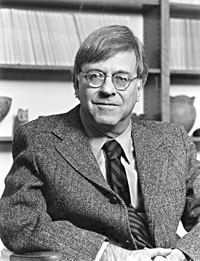Reflections: Richard Savage’s Vision Fulfilled
In 1984, as a fresh PhD, I heard Richard Savage give his presidential address at the Joint Statistical Meetings in Philadelphia. He called it “Hard/Soft Problems” and made a big pitch for statisticians to get involved in human rights data analysis. It was inspirational, and I was immediately sold. I started working with the American Statistical Association’s Committee on Scientific Freedom and Human Rights (now chaired by HRDAG’s own Megan Price). Over time, a growing set of statisticians became involved, initially in letter-writing campaigns to help dissident statisticians (and other quantitative academics—economists seemed to have a particular knack for getting jailed). Later on, people began to collect, analyze and even model human rights data. And that is where HRDAG picked up the torch and ran.
In the 1990s, Patrick Ball was working at the American Association for the Advancement of Science (AAAS) and was the intellectual and technical engine for its Committee on Scientific Freedom and Responsibility. I had several conversations with him during that period, and his perspective was completely different from the rest of the group. He saw the need to collect data and protect data, and use data as a scientific tool to enforce accountability. So, at the AAAS, Patrick rolled out the first incarnation of HRDAG.
It was transformational. Armed with strong statistical theory, such as Multiple Systems Estimation and spatio-temporal process models, HRDAG caused consternation to dictators and helped to build legal cases against them in The Hague. With quantified certainty, HRDAG could estimate how many people were missing but not reported, i.e., the undocumented missing. They applied this in Guatemala, Peru, Colombia and elsewhere, thereby sidestepping many complications that had handicapped earlier human rights activists.
For me, watching this unfold, it was the fulfillment of Richard’s 1984 vision, or rather hope. I am sorry he did not live long enough to see how much good HRDAG is doing in the world with statistics, but I am very proud to have been a small part of the effort. One can live and work a long time in statistics without doing much to make things better, but HRDAG follows a more consequential path.

